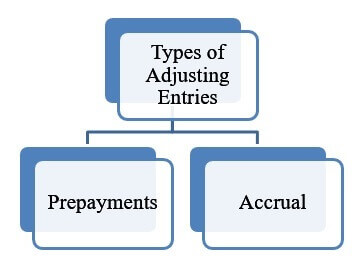Adjusting Entries Assignment Help
In Accounting, the general accounting principles and the standards form the basis of accounting procedure. There are two very accounting principles which are the fundamental part in the formation of the adjusting entries:
1. Matching Principle: The matching principle states that the revenues and expenses must be matched. It is based on the Accrual basis of accounting. According to this principle the expenses incurred to earn an income must be recorded when that income is earned. For example, the sales commission must be recorded when the sales are made.
2. Revenue Recognition Principle: The Revenue Recognition Concept states that the revenue and expenses must be recognized in the year in which they occur. According to this principle the revenue or expense must be recorded as soon as it takes place even if the cash is realized later.
Adjusting Entries: Adjusting Entries refer to the entries made at the end of every year to alter the balances in the ledger and to record every transaction i.e. revenue and expense according to the year of their occurrence. Thus it follows both the principles of Revenue Recognition and Matching at once. It is importance to follow the method of adjusting entries to keep a proper and systematic record of all the transactions.
There are two kinds of Adjusting Entries based on the type of their payment:
Adjusting Entries Assignment Help By Online Tutoring and Guided Sessions from AssignmentHelp.Net

1. Prepayments: The prepayments means when the cash has been paid or received before consumption. In other words, when the cash is paid to before consumption i.e. prepaid expense and when cash is received before consumption i.e. unearned revenue. In both the cases the realization of cash is before the happening of actual transaction.
In such a case, the unearned income is always shown as a liability as business has an obligation to provide services whereas the prepaid expense is shown as an asset as the cash has been paid already and the services are yet to be availed.
E.g.: Unearned Income:
| Particulars | Dr. | Cr. |
|---|---|---|
| Cash Unearned Revenue (Being Cash was received for the unearned income.) | 2000 | 2000 |
| Unearned Revenue Revenue (Being adjustment entry passed.) | 2000 | 2000 |
Prepaid Expense:
| Particulars | Dr. | Cr. |
|---|---|---|
| Prepaid Expense Cash (Being cash paid for the prepaid expense) | 2000 | 2000 |
| Expense Prepaid Expense (Being adjustment entry passed.) | 2000 | 2000 |
2. Accrual: The Accrual means when the service or the good has been consumed but the cash is still to be paid. In other words, when the services are availed but the firm has not paid the obligation for the services, the situation of liability occurs. On the other part if the services have been provided but the cash has not been realized; that also is a situation of Accrual. In such a case, the outsider party has an obligation towards the business.
In the Accrual case, the Accrued Income will appear as an asset as the income is still to be realized whereas the Outstanding Expense will appear as a liability as business has to pay the obligation in future.

E.g.: Accrued Income:
| Particulars | Dr. | Cr. |
|---|---|---|
| Accounts Receivable Accrued Income (Being Cash was received for the unearned income.) | 2000 | 2000 |
| Accrued Income Income (Being adjustment entry passed.) | 2000 | 2000 |
Similarly the entry can be passed for the outstanding expense as well.
Most of the adjusting entries are classified in these two categories only. Except these two there are 2 more kinds of adjusting entries. These are:
1. Estimates: There are several estimates made in the business which require an adjustment entry. This kind of entry exists where the exact amount of transaction cannot be ascertained and hence as a result the entry is passed with an estimate only. For example: Depreciation, amortization, provision of doubtful debts etc.
| Particulars | Dr. | Cr. |
|---|---|---|
| Depreciation Accumulated Depreciation (Being Depreciation charged on the assets as per the method of Provision of Depreciation.) | 2000 | 2000 |
2. Inventory: It is not important to pass an adjusting entry for the inventory. It is passed to determine the cost of gods sold in the business. Though this entry is not necessary in a business maintaining perpetual inventory.
The several examples of Adjustment Entries are:
- To record depreciation and amortization for the period
- To record an allowance for doubtful accounts
- To record a reserve for obsolete inventory
- To record a reserve for sales returns
- To record the impairment of an asset
- To record an asset retirement obligation
- To record a warranty reserve
- To record any accrued revenue
- To record previously billed but unearned revenue as a liability
- To record any accrued expenses
- To record any previously paid but unused expenditures as prepaid expenses
- To adjust cash balances for any reconciling items noted in the bank reconciliation
The Adjusting Entries are necessary to be passed for accounting. If the accounts of a business are to be prepared in accordance to the Accounting Standards, the passing of adjustment entries is necessary. The Entries help in the formation of the Trial Balance and proper formulation of the Balance Sheet as we can classify different aspects clearly as assets or liabilities.
Thus a business’s functioning is highly reliable on the proper passing of Adjustment Entries. The passing and analysis of the Adjusting Entries can be a tricky task. But we are here to help you at assignmenthelp.net where you can contact us at anytime and we will help you with your queries and helping you out with your assignments. We respect that you can’t lose on marks and that is why we are here to provide you with the best facilities and qualitative results. You can also take online classes from the best tutors. We believe in providing the best services for your satisfaction. We serve our clients with good and satisfying work and with complete dedication.
For more information regarding the Accounting and Financial Assignment please visit assignmenthelp.net where you can have a look at some of our assignments and see how effective they are.


